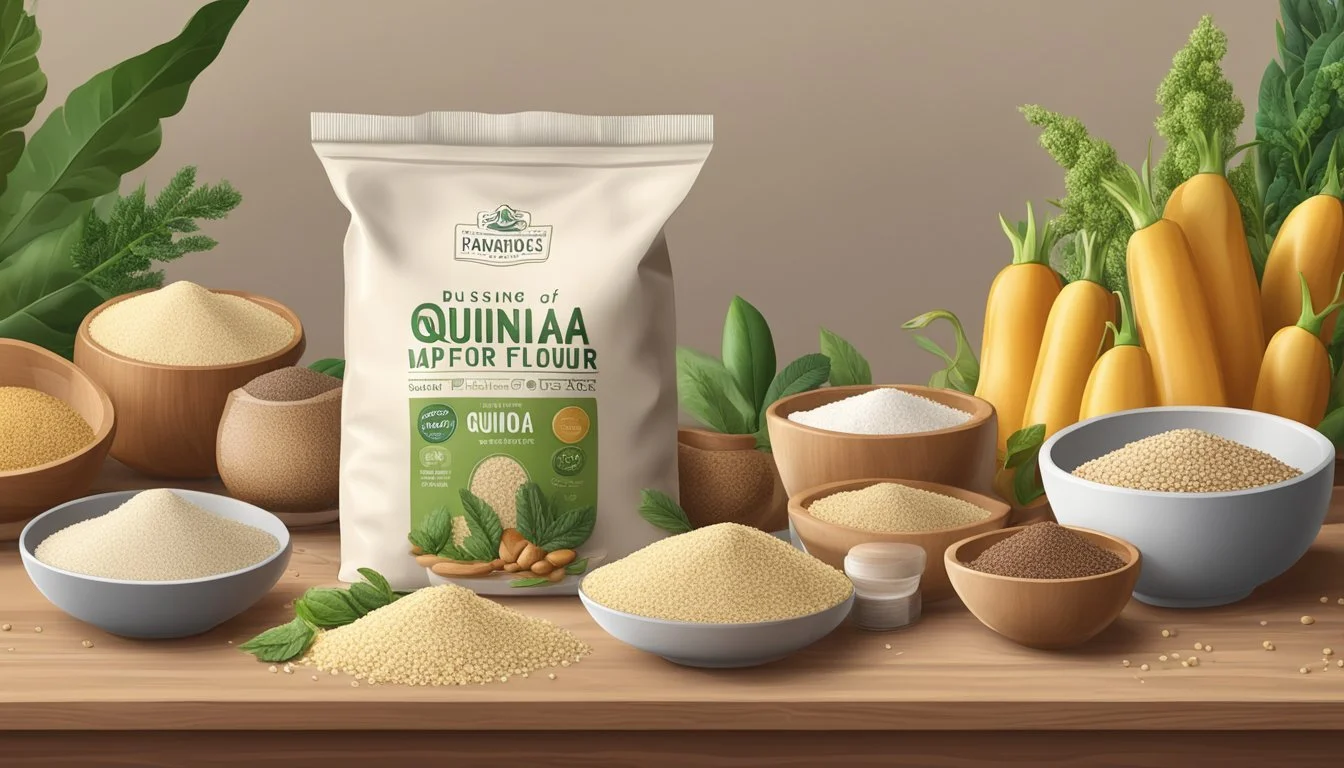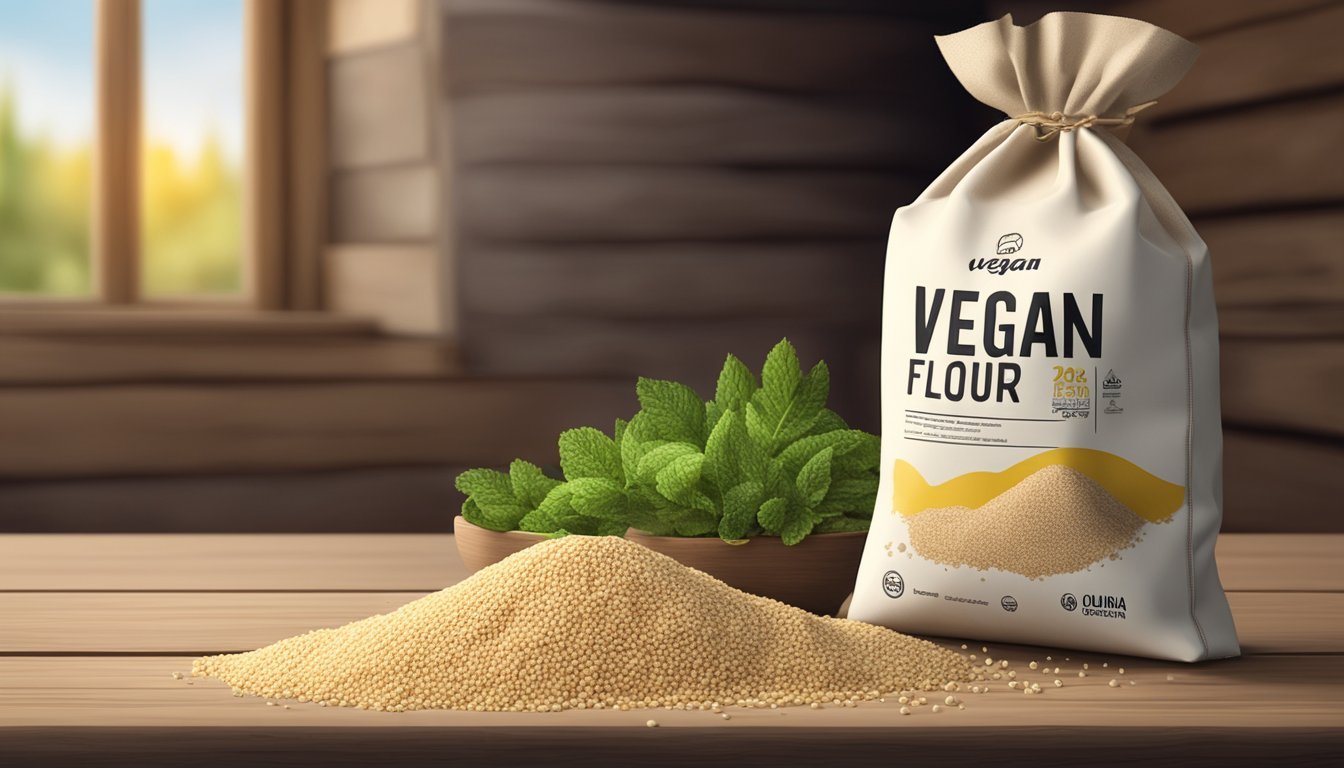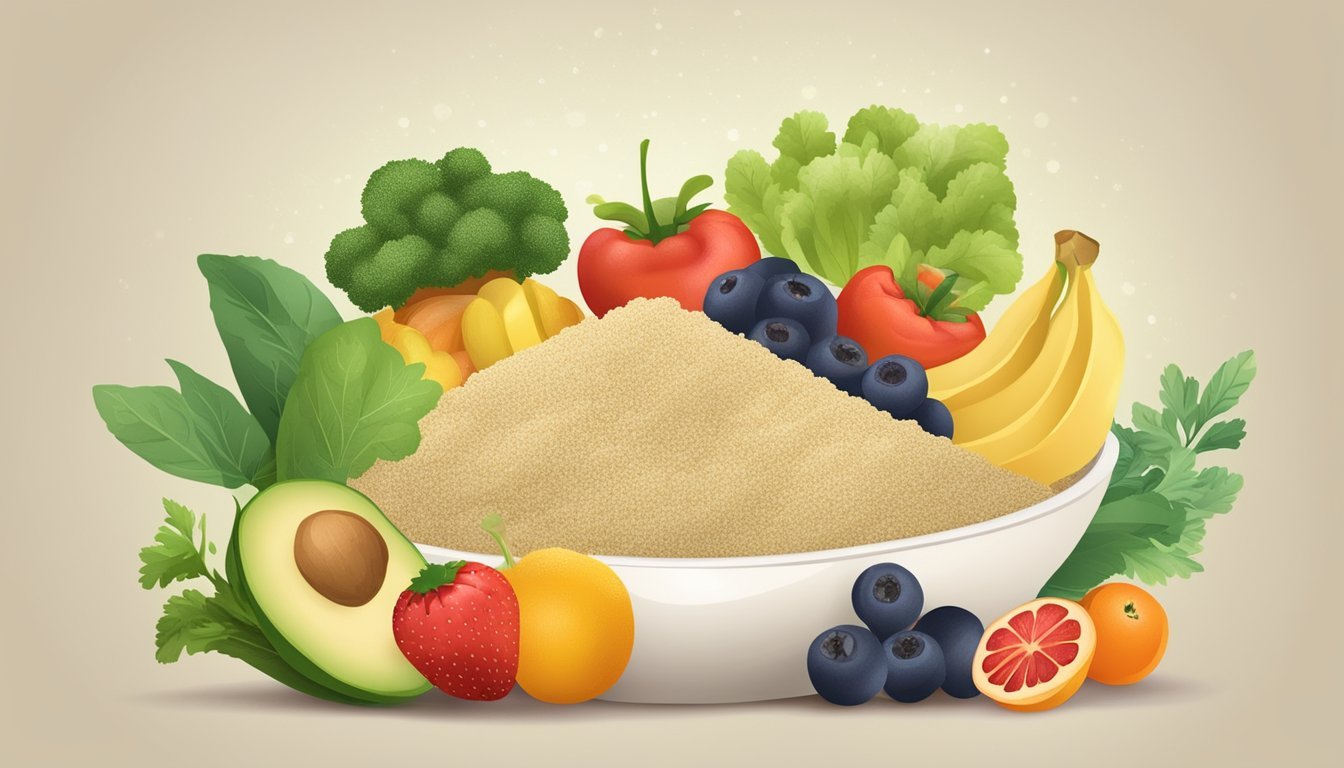Is Quinoa Flour Vegan?
Unveiling the Truth About This Popular Alternative
Quinoa (What wine goes well with quinoa?) flour is increasingly popular among health-conscious consumers and those with specific dietary preferences. As a natural product derived from the grinding of quinoa seeds, quinoa flour carries the intrinsic qualities of quinoa, which is a complete protein source with all nine essential amino acids. Due to its plant-based origin, quinoa flour is inherently vegan, making it a suitable ingredient for those on a vegan diet.
The versatility of quinoa flour is evident in its widespread use as an alternative to traditional wheat flour in various recipes, from bread (What wine goes well with bread?) and pancakes to other baked goods. This gluten-free flour caters not only to vegans but also to individuals with gluten intolerances or celiac disease, offering a nutritious and adaptable option in the kitchen.
In assessing whether quinoa flour is vegan, it's essential to consider the processing methods. Pure quinoa flour, without any additives or mixed with other non-vegan components, maintains its vegan status. Shoppers should still read labels to ensure no cross-contamination or additional ingredients that might not align with a vegan lifestyle.
What Is Quinoa Flour?
Quinoa flour is a type of flour made by grinding quinoa seeds into a fine powder. It serves as a nutrient-dense, gluten-free alternative to traditional wheat flour.
Quinoa Flour Composition
Quinoa flour consists of finely ground quinoa seeds. Quinoa, considered a pseudocereal, does not contain gluten, which makes quinoa flour an excellent choice for those with gluten intolerances or celiac disease. Additionally, the flour maintains the characteristic nutty flavor of whole quinoa, making it a distinct ingredient in various recipes.
Quinoa Flour Nutritional Profile
Quinoa flour is rich in protein and fiber, providing a substantial nutritional boost to food items. It has a high content of essential amino acids, making its protein complete, unlike most plant-based sources. Quinoa flour also boasts a variety of minerals such as iron, magnesium, and calcium, as well as vitamins like vitamin E and B-group vitamins. Its carbohydrates are complex, which can contribute to a steadier energy release and maintain blood sugar levels.
Nutrient Value per 100g Protein 14g Fiber 7g Iron 4mg Calcium 47mg
Quinoa Flour Versatility
Quinoa flour has a versatility that can be seen in its use across a wide range of recipes, from baked goods to pancakes. Its texture and flavor complement both sweet and savory dishes, making it a flexible option for gluten-free cooking and baking. The flour's properties allow it to be used as a thickening agent for soups and sauces as well.
Benefits of Quinoa Flour in Vegan Diet
Quinoa flour, emerging as a staple in vegan kitchens, packs a powerful punch of protein and essential nutrients, while offering a gluten-free solution for various culinary creations.
High in Plant-Based Protein
Quinoa flour is an exceptional source of plant-based protein, containing more protein than many other grains. It is not just rich in protein but also offers a complete protein, which means it contains all nine essential amino acids that the body cannot produce on its own, making it a particularly valuable ingredient in a vegan diet where protein sources can be limited.
Gluten-Free Baking Alternative
For those on a vegan diet who also have gluten sensitivities or celiac disease, quinoa flour serves as a nutritious and versatile baking alternative. Its gluten-free properties make it safe for those with allergies, and it can be used to replace traditional flours in recipes for breads, pancakes, and other baked goods, making it a very healthy choice.
Nutrient-Dense Vegan Ingredient
Quinoa flour is not only high in protein and fiber but also rich in a variety of other nutrients. It's a nutritious addition to the vegan diet, boasting high levels of iron and zinc—minerals that are sometimes more challenging to obtain from plant-based sources. Its high fiber content contributes to digestive health and a feeling of fullness, supporting weight management and overall well-being.
Quinoa Flour in Cooking and Baking
Quinoa flour is an incredibly versatile ingredient suitable for a wide range of vegan cooking and baking applications. This gluten-free alternative to traditional flours provides a nutrient-rich option for those with dietary restrictions or anyone looking to add diversity to their dishes.
Cooking with Quinoa Flour
In cooking, quinoa flour can act as a thickener for soups and sauces, giving meals a slight nutty flavor and a boost of protein. For a simple start, one can easily incorporate it into everyday recipes where traditional flour is used. Quinoa pancakes make an excellent example of a delicious, easy-to-make dish. The pancakes are often made by blending quinoa flour with baking powder, salt, and a touch of oil, bypassing the need for eggs. A pancake recipe might include:
1 cup quinoa flour
1 tablespoon baking powder
1/4 teaspoon fine sea salt
1 tablespoon oil
1 cup water or non-dairy milk
One can cook these pancakes on a preheated, oiled pan until bubbles form, then flip to cook for an additional minute or two.
Baking with Quinoa Flour
In baking, quinoa flour stands out for its ease of use in recipes ranging from bread to sweet treats. When substituting for all-purpose flour, quinoa flour can sometimes be used in a 1:1 ratio, though some recipes may require a blend with other flours to achieve the desired texture. Sugar-free and yeast-free baking is remarkably simple with quinoa flour. A staple includes basic soda bread, needing only quinoa flour, baking soda, an acid such as vinegar or lemon juice, salt, and water. Vegan bread can be enhanced by incorporating flaxseed meal as an egg substitute, increasing the bread's nutritional profile without compromising taste or texture.
For sweets like cakes and cookies, quinoa flour pairs well with natural sweeteners. The flour’s absorbent quality may demand adjustments in liquid ingredients to maintain moisture. A typical recipe might balance its dry ingredients with items like unsweetened vanilla almond milk or applesauce to avoid added sugars. With its rich nutrient content and neutral base, quinoa flour can easily become a staple in any vegan kitchen for both savory and sweet creations.
Vegan Recipes Using Quinoa Flour
Quinoa flour offers a nutrient-rich, gluten-free alternative for vegan baking and cooking, lending a nutty flavor and a boost of plant-based protein to many recipes.
Quinoa Pancakes Recipe
Quinoa pancakes are not only easy to make but also provide a healthful start to your day. For a fluffy texture:
Mix quinoa flour with baking powder, a pinch of salt, and cinnamon for flavor.
Prepare a flax "egg" by combining ground flax seeds with water and let it sit until thickened.
Combine the flax "egg" with the dry ingredients, add a sweetener like coconut sugar or stevia, and a plant-based milk of your choice.
Preheat a non-stick pan and lightly grease it with cooking spray or vegetable oil.
Pour the batter to form pancakes and cook until bubbles appear, then flip and cook until golden brown.
Serve with toppings like sliced bananas, blueberries, or a dollop of coconut yogurt for an enjoyable meal.
Vegan Quinoa Flour Bread
For a satisfying, dairy-free bread made with quinoa flour:
Blend oat flour and quinoa flour with baking powder, salt, and any additional desired spices or herbs.
Incorporate wet ingredients such as plant-based milk, apple cider vinegar, and a sweetener if needed.
Pour the mixture into a loaf tin lined with greased baking paper.
Bake until the bread is firm to the touch and a toothpick inserted comes out clean.
This bread pairs beautifully with spreads like almond butter or toppings like ripe bananas.
Quinoa Flour Desserts
Incorporating quinoa flour into desserts adds nutrition without sacrificing taste.
To make oil-free and nut-free desserts, whip up quinoa flour fritters with mashed ripe banana, chia seeds, and a touch of vanilla extract.
For a lemony twist, add lemon juice to your batter.
Prepare plant-based quinoa cookies using quinoa flour, ripe bananas, and a dash of cinnamon for sweetness.
Sweeten your desserts naturally with ripe bananas, apple sauce, or stevia to keep them health-conscious and flavorful.
Storage and Shelf Life of Quinoa Flour
Proper storage is crucial to maintaining the quality and extending the shelf life of quinoa flour. Unopened quinoa flour can last 4-6 months past its best-by date, while opened quinoa flour generally lasts 3-6 months if stored correctly.
Storing Quinoa Flour at Home
To maintain the freshness of quinoa flour at home, one should store it in a cool, dry place such as a pantry. It's advisable to transfer the flour to an airtight container after opening to prevent exposure to moisture and air, which can degrade its quality. The ideal storage conditions for quinoa flour at home to maximize its shelf life are:
Temperature: Below room temperature
Container: Airtight container
Location: Cool, dry pantry or cupboard
Using these storage practices can help ensure quinoa flour remains in its best condition for consumption.
Freezing Quinoa Flour
For long-term preservation, quinoa flour can be stored in the freezer. Freezing can significantly extend its usable life, making it a practical option for individuals wanting to keep quinoa flour fresh for up to 8-12 months. The recommendations for freezing quinoa flour are:
Container: Sealed, airtight container or freezer bag
Labeling: Clearly labeled with date of freezing
Defrosting: Thaw at room temperature when ready to use
By freezing quinoa flour, its shelf life is expanded, and its quality is preserved, which is especially beneficial for those who do not use it frequently.
Finding Quality Quinoa Flour
When shopping for quinoa flour, discerning consumers focus on origin, processing methods, and certifications to ensure they are receiving a true superfood product.
Selecting the Best Quinoa Flour
The shopper should seek out quinoa flour that boasts freshness and purity. A high-quality quinoa flour is often milled from whole quinoa seeds ensuring all the nutritional benefits are retained. The milling process should be such that it produces a fine, consistent powder, making it suitable for a range of recipes from baked goods to smoothies. Some brands may also offer quinoa flakes, which can be ground into flour using a food processor. This may be an option for those looking for the freshest possible flour, as they can grind it themselves.
Attributes of High-Quality Quinoa Flour:
Fine, soft texture: Smooth to the touch, without coarseness.
Pure quinoa content: No fillers or added ingredients.
Freshness: Ideally packaged in airtight containers to preserve freshness.
Color: Light, creamy color indicative of unadulterated quinoa.
Understanding Labels and Certifications
Labels and certifications give valuable information about the quality and origins of quinoa flour. A buyer should look for relevant certifications such as Organic or Non-GMO, which indicate that the quinoa has been grown without synthetic pesticides or genetic modification. Additionally, certifications like Fair Trade can inform them that the quinoa has been sourced responsibly, with fair compensation for the farmers. Sometimes, labels may also highlight the addition of complementary ingredients, such as ground flaxseed for added nutritional value or bicarbonate of soda for flour intended for specific uses like baking.
Checklist for Label Insights:
Organic Certification: Verify organic authenticity.
Non-GMO Project Verified: Look for the butterfly label.
Additional Ingredients: Look for any added superfoods or baking agents, like ground flaxseed or bicarbonate of soda.
Best Before Date: Ensure the product is within its consumption period for optimal quality.
By paying attention to these details, one can secure quinoa flour that is not only vegan but also of the highest standard.
FAQs: Common Questions About Quinoa Flour
Engaging with quinoa flour can lead to questions about its versatility and nutrition. The following FAQs address common queries related to substituting quinoa flour in recipes and its nutritional benefits.
Substituting Quinoa Flour in Recipes
Quinoa flour can be a fantastic substitute for wheat flour in numerous dishes, due to its desirable nutritional profile and distinct nutty flavour. It's well-suited for breakfast items like banana bread or pancakes when paired with ingredients like maple syrup and apple cider vinegar to enhance taste. When replacing traditional flour with quinoa flour in recipes:
Begin by substituting half the amount of regular flour with quinoa flour to retain the structure of your baked goods.
To achieve a desirable consistency, you may need to adjust liquid ingredients such as milk or oil.
Nutrition Information for Quinoa Flour
Quinoa flour shines in its nutritional benefits, being a complete source of plant-based protein and high in fiber. Its composition includes essential amino acids, vitamins, and a balanced count of carbohydrates. A radiant addition to a healthy diet, it also contributes to the variety in salad dressings or as a thickener for soups and gravies. Here’s a brief overview of its nutritional profile:
Protein: A rich, high-protein alternative especially vital for those following a vegetarian or vegan diet.
Fiber: Aids in digestion and can be a positive addition to daily fiber intake.
Carbohydrates: Supplies energy with a moderate carbohydrate content.
By storing quinoa flour in a cool, dry place and sealing it properly, its shelf life can be extended, and its nutritional value can be maintained. Incorporate this versatile powder smartly to enhance both the taste and health quotient of your meals.







